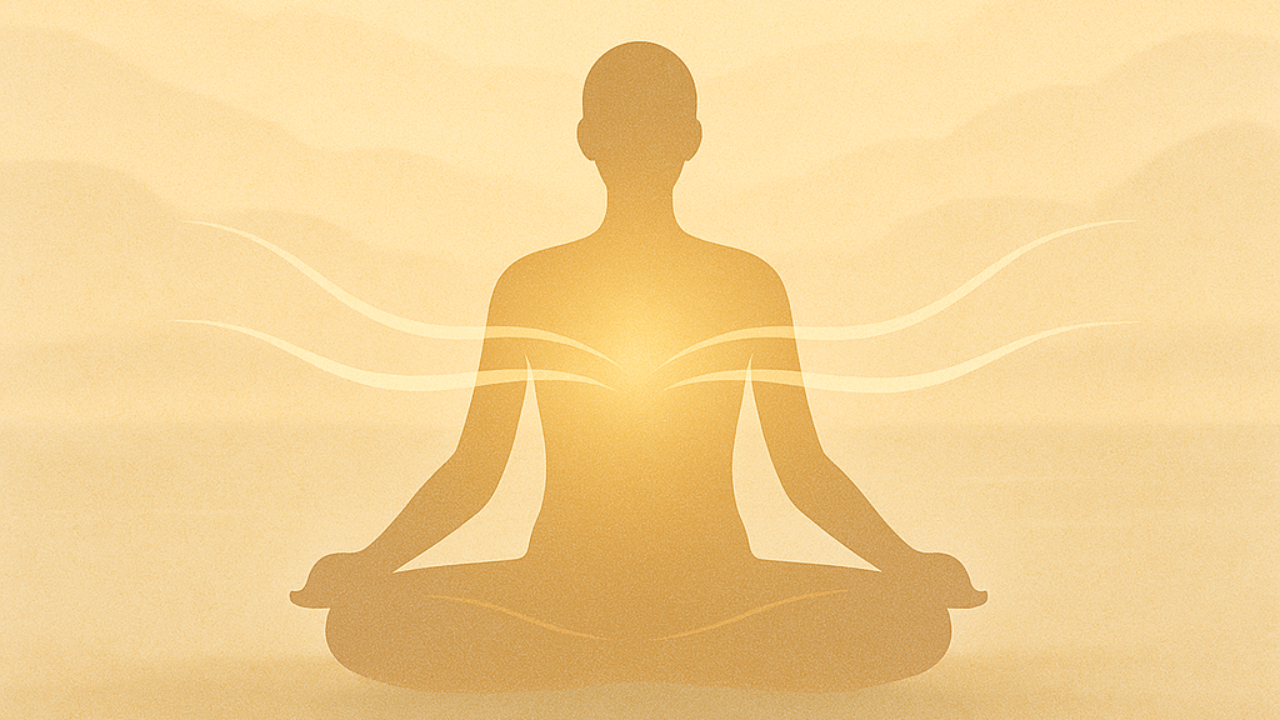Stillness in Motion
Oct 29, 2025
Stillness in Motion: How Yoga, Breath, and Meditation Anchor the Modern Mind
We live in constant motion — endless doing, planning, creating, scrolling.
Even when the body is still, the mind keeps running marathons.
Yet beneath all this motion lies a quiet rhythm — steady, ancient, alive.
It’s not found in some distant retreat. It’s here, beating in your chest, breathing through every moment.
The journey of yoga begins not by escaping the world, but by discovering stillness within motion.
Yoga — Union, Not Escape
Modern culture turned yoga into posture and performance,
but in its essence, yoga means to unite — to bring body, breath, and awareness into harmony.
When your body moves with awareness,
when your breath flows without resistance,
when your mind witnesses without judgment
that is yoga.
Yoga is not what the body does; it’s how present you are while doing it.
You can practice it while walking, breathing, writing, even washing dishes.
Because yoga is not a shape — it’s relationship.
The moment body and awareness meet, stillness begins.
Breath — The Bridge Between Worlds
Between the visible and invisible, there is one bridge: the breath.
It belongs to both — the body moves it, the mind feels it, the Self observes it.
When breath is shallow, thoughts scatter.
When breath deepens, the mind returns home.
That’s why every tradition begins with prāṇāyāma — conscious breathing.
To breathe with awareness is to remember the present moment.
You don’t have to force calm; you simply make space for it to arrive.
Each slow exhale thins the fog between you and clarity.
Breath is how stillness enters motion.
Meditation — Seeing, Not Stopping
Many think meditation means stopping thought.
It’s not about forcing silence — it’s about seeing clearly.
Imagine a river flowing. You don’t stop the water; you watch until its movement becomes transparent.
That watching — gentle, steady, honest — is meditation.
You start noticing:
how moods rise and fall,
how reactions come and go,
how peace was never lost — only hidden under noise.
The goal is not to create silence;
it’s to discover the silence that was always there.
The Three Doors of Practice
In Vedānta, practice unfolds through three doors —
each one leading closer to stillness:
Body (Āsana): move consciously. The body is the temple — stable, alert, open.
Breath (Prāṇāyāma): let breath guide awareness; lengthen it, listen to it.
Mind (Dhyāna): sit quietly, observe, rest in presence.
When all three align, the scattered rays of energy converge into light.
That is meditation — not withdrawal, but union.
Stillness Is Not the Absence of Movement
The world doesn’t need you to sit forever in silence.
It needs you to act from clarity — to let your work, words, and choices carry the fragrance of awareness.
You don’t need to leave motion; you need to infuse it with stillness.
That’s how a yogic life feels:
movement outside, peace inside.
Whether you teach, lead, build, or nurture — your breath can become your prayer,
your work, your yoga.
Practicing in the Modern World
In a world that glorifies speed, slowing down is a quiet revolution.
Even five minutes of breath before opening your phone,
a moment of gratitude before a meal,
or silence before sleep —
these are not small things.
They are micro-practices that rebuild connection with life itself.
Each small act of awareness is a step toward freedom.
That’s what Nandi.zone is for — a space to practice stillness in motion.
Where what you learn at Nandihub becomes what you live.
Pause & Reflect
When was the last time I breathed without a goal?
What movement in my day could become a meditation?
How would it feel to let awareness guide, not effort?
Stillness begins the moment you stop trying to get somewhere else.
Closing Thought
Stillness is not something you find after the noise ends —
it’s the awareness that hears the noise and stays untouched.
When breath, body, and awareness unite, life moves differently —
not slower, but wiser.
That is true yoga —
not escape from the world,
but harmony with it.

